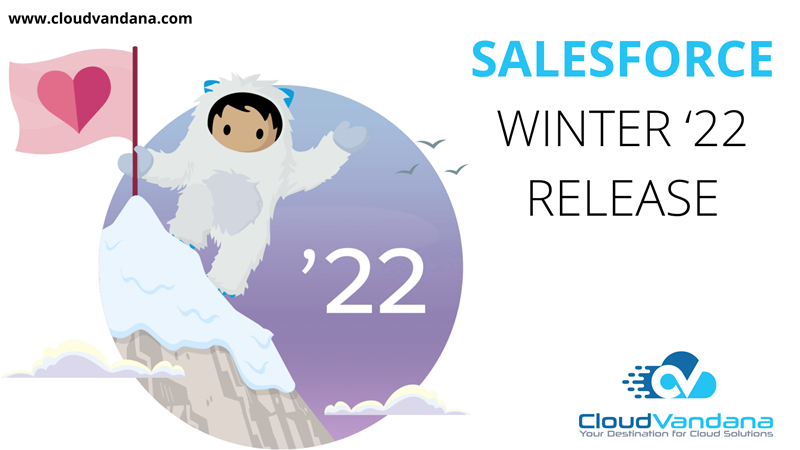As winter approaches the door, there is excitement all around the Salesforce ecosystem. So Salesforce is again here to announce a brand new Salesforce release for us. So with the latest and greatest features, Salesforce is getting prepared. Salesforce Winter ‘22 release is making its way out and they have mentioned a few important dates to keep an eye on. So among the 550pages of Salesforce Winter ‘22 release notes, CloudVandana has come up with 8 top features of this release. So let’s have a look.
In-App Guidance for specific Record Types
Now users can be absolutely precise on where to show In-App Guidance prompts on a particular object’s page layout from now on. Moving forward, users can decide if they want to display the prompt on an object of all record types or any specific record type. Previously, it was observed that if the prompt is added to an object which has record types and related pages, then it used to show up on all the record pages. Now users can control that with the record-type settings while creating the In-App Guidance prompts.
Einstein Search
Global search in Salesforce has got smarter this time. With the Einstein search, users have intelligence built-in in the regular record search activity. It is enabled by default and absolutely free. Now einstein offers personalized search results, record previews from the search box, and natural language searches. So users can now type in Salesforce just how one talks to the smart assistance.
Dynamic Gauge Charts
Dashboard Gauge Charts are used to measure values against a set range. Though those ranges have been static all this while where they need to be clear while setting up the component. Dynamic gauge charts make the users free from the static values associated with goals or targets. Now users can build the gauge charts using report metrics and field values that respond dynamically to any business.
Dynamic Interactions
Dynamic interaction is a feature that will allow components on a lightning page to talk to each other and that too without any coding. Now anyone will be able to point and click their way through the Lightning App Builder for this experience. When an event occurs in one component on a Lightning page, can automatically update other components on the page. At first, developers create custom components with events. Then admins configure these events by setting up interactions between the components in lightning App Builder.
Org-Specific Metrics
The lightning framework brings along various factors that may affect the expected page-load time(ETP) for a lightning page at runtime. Now, with org-specific metrics, admins can visualize the users’ performance metrics and recommendations. The Org-specific metrics card shows analyzed data from the last 90 days of use that include the users’ browser speed, number of cores of their computers, etc. With these functionalities, admins can make informed decisions and tweak the Lightning pages for better performance.
Include Images in Rich Text Component in the Lightning App Builder
Now adding images in the Lightning App Builders Rich Text components becomes easy. This function gives an opportunity to increase the usability of the Rich Text Components. Users can have an image in the Rich Text component that shows ‘VIP Customer’, and ‘Handle with Care’ and have dynamic component visibility based on the Account or Contact’s field values.
New Rules-Restriction Rules and Scoping rules
With Restriction rules, admins can protect organizational data and boost productivity by allowing the users to see only the records relevant to their job function. These rules can be created to specify the subset of data that the specified groups of users will have access to it.
With scoping Rules, the criteria that the admins select, set rules so that the users see only records that are relevant to them. With the help of scoping rules, admins have a mechanism to prevent users from accessing records that contain sensitive or irrelevant information.
Pipeline Inspection
Pipeline inspection now allows users to save their frequently used pipeline views. This feature saves users’ time in recreating them every time they are looking at the Pipeline inspection views.
So these were the highlights of the Salesforce Winter ‘22 release. Do you have any queries for any of the above-mentioned features? Please feel free to take a consultation call from the Salesforce experts of CloudVandana. Stay tuned to us for many more interesting blogs.










